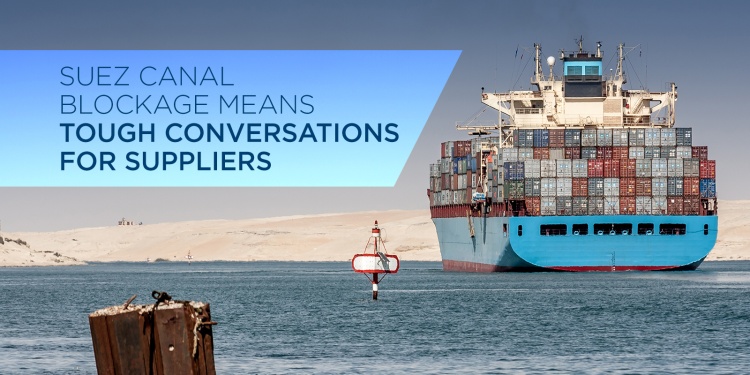
Three months into 2021, and we’ve got yet another unprecedented event: a massive ship is stuck in the Suez Canal. It’s the first time that’s happened in the canal’s 150-year history, and it’s already creating huge problems in terms of its:
- economic impact (goods can’t get to market with this ship stuck in the canal),
- security impact (the canal is in an unstable part of the world, and officials have already voiced concerned that idling ships could be attacked), and
- human impact (the sailors onboard this ship—as well as those stuck on the ships queued up behind it—are stuck in an unexpected and uncomfortable situation).
But the sustainability impact of this snafu could be even bigger. Estimates are that as many as 100 vessels are waiting behind the ship that’s stuck, and they’re being told to stay on high alert—which means they’re probably burning fuel while they wait. A single container ship can produce the same amount of pollution as 50 million cars. Put another way, 15 large container ships create as much pollution as all of the cars in the world. And you shouldn’t think this will be a short-term hit to the environment. All the ships losing time waiting in line are going to have to burn even more fuel—an additional 1,000 tons, according to maritime news outlet gCaptain—by sailing faster to meet their deadlines.
For supply chain professionals with stuff stuck in the Suez, this is obviously a massive headache. But how fast that headache goes away—and how much it costs in terms of sustainability, security, people, and the bottom line—hinges on supplier relationship management (SRM):
- Supply chains with strong SRM will have insight into the latest updates on the situation—those without it might not even know their organization is involved.
- Supply chains with strong SRM will be working with suppliers to solve the problem together—those without it will be pointing fingers and screaming at their suppliers.
- Supply chains with strong SRM can work with suppliers to make decisions that best serve their organizational goals (such as, “We really want to meet our third-party emissions goals this year, so don’t burn the extra fuel to get us our stuff on time”)—those without it will be at the mercy of “whatever happens, happens.”
This is only the latest supply chain disruption the world has thrown at us. It’s time we stop letting the winds of change blow us wherever they may and start working more collaboratively and proactively with suppliers to create a more sustainable and predictable future. It’s time to make sure your supply chain risk playbooks and scenario plans are up-to-date, and it’s time to be double-sure that your suppliers are prepared to work with you to execute them.
That’s why I invite you to join me for APQC’s complimentary webinar, Leveraging Supplier Relationships to Drive Resilience, on March 30th at 12 pm CST. Along with top SRM experts Kate Vitasek and Bonnie Keith, I’ll share real-world examples of success (and failure) with key suppliers and guidance on how to build, strengthen, and structure supplier relationships that allow for flexibility and collaboration.